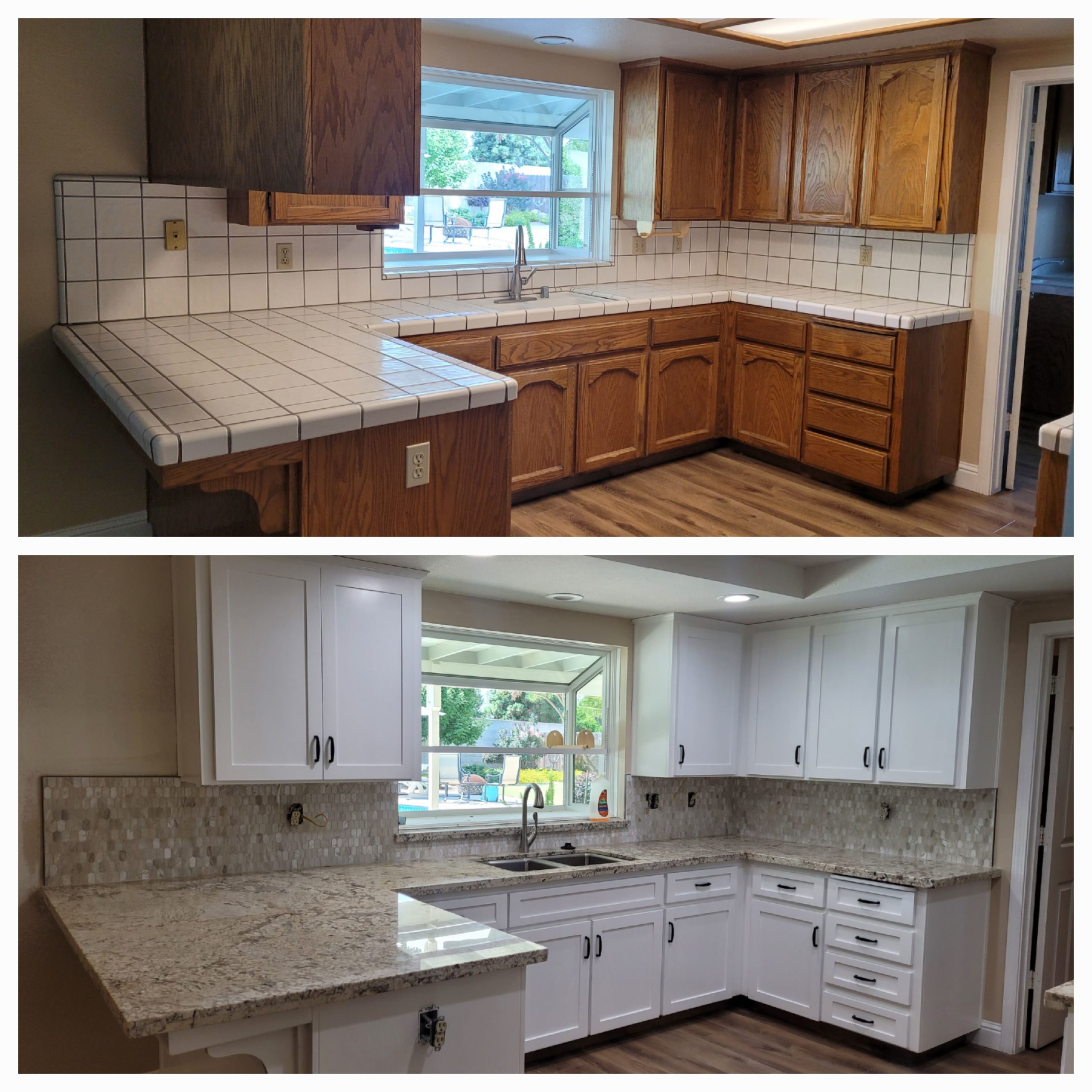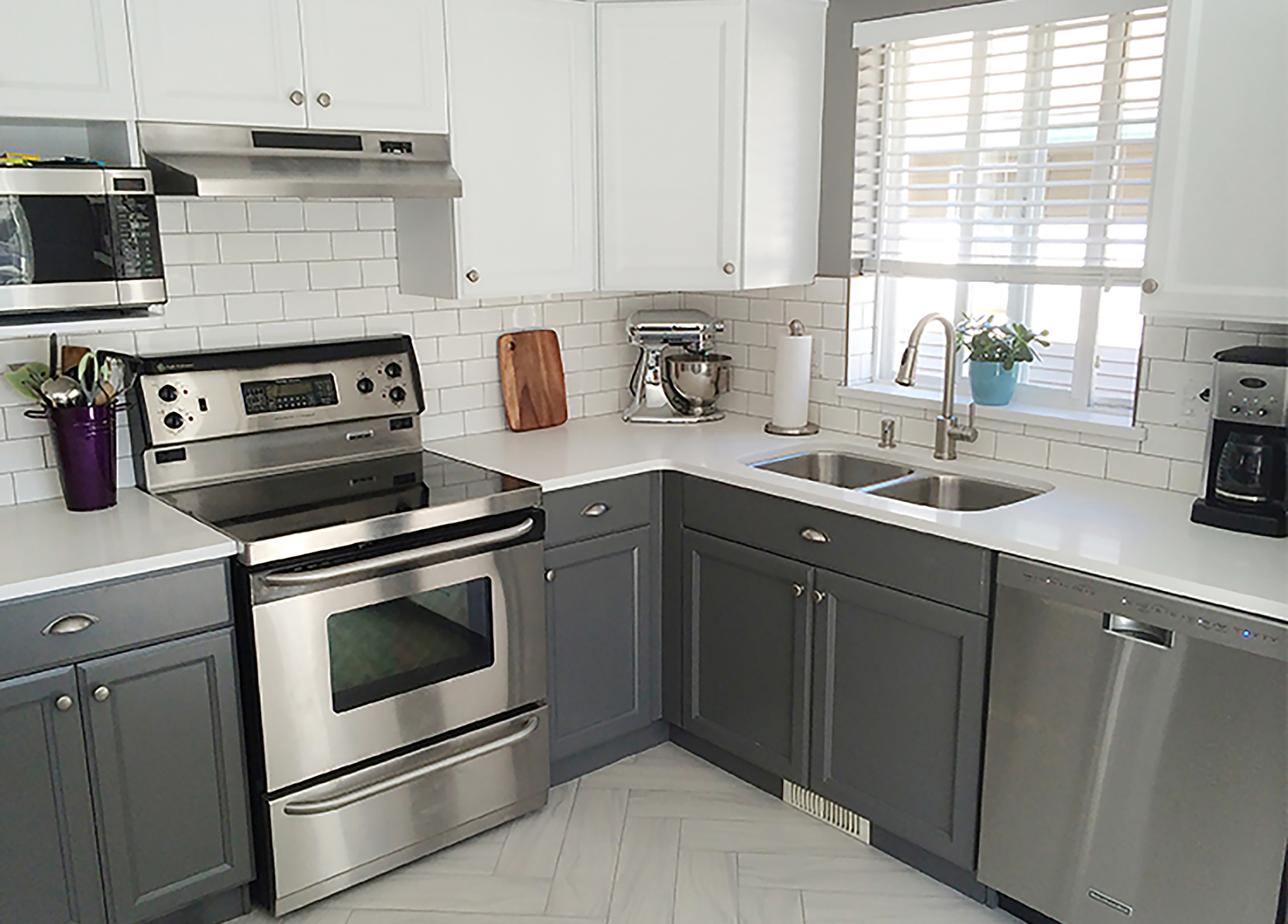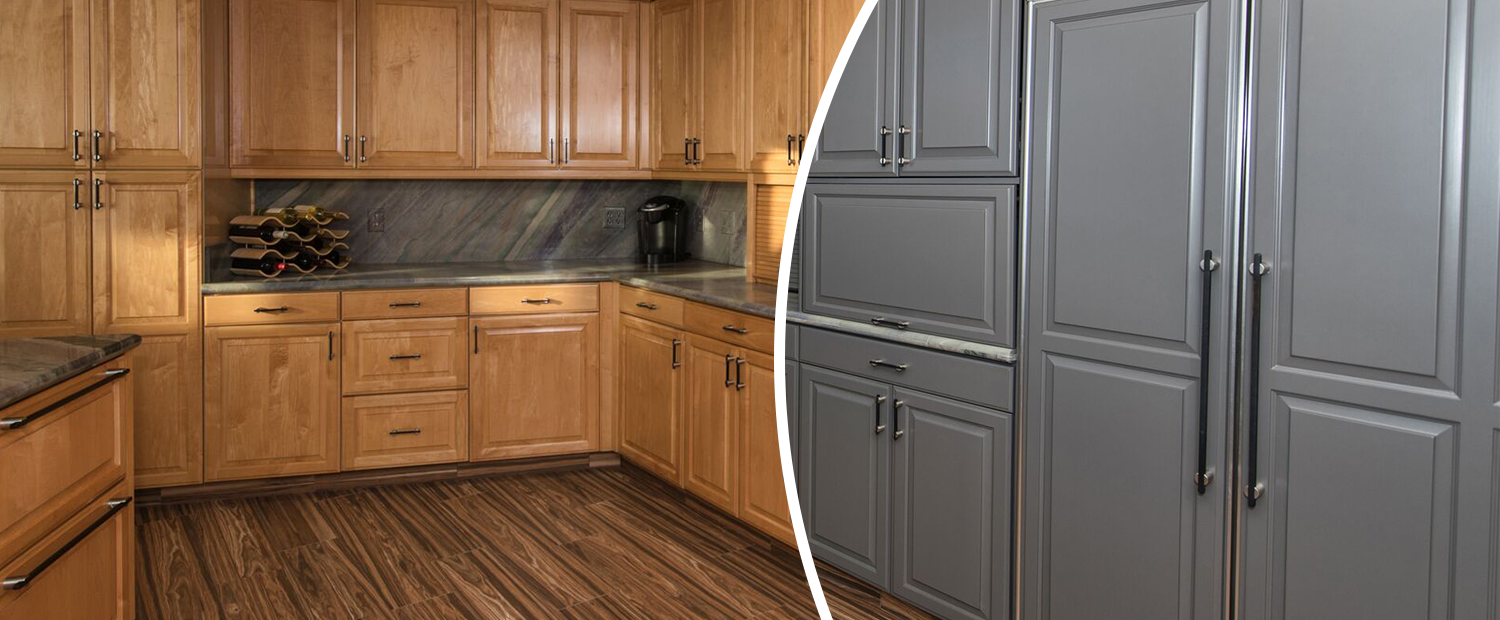Surface Preparation for Painting Refaced Cabinets

Painting refaced cabinets can dramatically upgrade your kitchen or bathroom, but the success hinges entirely on meticulous surface preparation. Skipping this crucial step will lead to a subpar finish, with paint chipping and peeling far sooner than expected. Proper preparation ensures a smooth, durable, and professional-looking result that will last for years. Let’s delve into the essential steps.
Cleaning and Prepping Refaced Cabinet Surfaces, Can refaced cabinets be painted
Thorough cleaning is the first critical step. Remove all dust, grease, and grime using a degreasing cleaner. A mixture of warm water and mild dish soap often suffices. Pay close attention to handles, knobs, and crevices. Allow the cabinets to dry completely before proceeding. Next, lightly sand the surfaces with fine-grit sandpaper (180-220 grit). This creates a slightly rough surface that allows the primer and paint to adhere better. Focus on smoothing any imperfections and removing any remaining residue from the refacing process. Avoid aggressive sanding, as you risk damaging the cabinet surface.
Primer Selection for Refaced Cabinets
Choosing the right primer is vital for optimal paint adhesion and a long-lasting finish. Different primers cater to specific needs. The following table provides a comparison of popular primer types:
| Primer Type | Surface Compatibility | Drying Time | Cost |
|---|---|---|---|
| Oil-based Primer | Most surfaces, excellent for stain blocking | 4-6 hours | Medium to High |
| Acrylic/Water-based Primer | Most surfaces, low odor, easy cleanup | 2-4 hours | Low to Medium |
| Sheen Primer | Provides a smooth, uniform base for paint | 2-4 hours | Medium |
| Specialty Primers (e.g., for laminate) | Specific surface types, such as laminate or melamine | Varies by product | Medium to High |
Filling Imperfections and Patching Damaged Areas
Before painting, address any imperfections or damage on the refaced cabinets. This involves filling nail holes, scratches, or minor dents. Use a high-quality wood filler appropriate for the cabinet material.
- Clean the area: Remove any loose debris or dust from the damaged area.
- Apply the filler: Use a putty knife to apply the wood filler, slightly overfilling the imperfection.
- Let it dry: Allow the filler to dry completely according to the manufacturer’s instructions.
- Sand it smooth: Once dry, sand the filler flush with the surrounding surface using fine-grit sandpaper.
- Clean the area again: Remove all sanding dust.
For larger damaged areas, consider using a patching compound or replacement pieces if necessary, followed by the same sanding and cleaning process.
Taping and Masking Techniques
Proper taping and masking is essential to prevent paint from reaching unwanted areas. This step requires precision and patience. Use high-quality painter’s tape designed for smooth surfaces.
Imagine this: For cabinet doors, apply tape along the edges and around the handles, creating a clean line. For drawers, tape the edges and the front face, ensuring the tape adheres smoothly to prevent bleed-through. For hinges, carefully mask around each hinge using small pieces of tape, creating a protective barrier. For recessed areas, use painter’s tape and masking paper to cover the entire area. Remember to always smooth the tape to ensure a clean edge. Consider using a plastic drop cloth or similar to protect the surrounding area. This meticulous approach will safeguard your walls and other surfaces from accidental paint spills.
Paint Selection and Application Techniques for Refaced Cabinets: Can Refaced Cabinets Be Painted

Choosing the right paint and applying it correctly is crucial for a professional-looking finish on your refaced cabinets. The wrong paint can lead to chipping, peeling, or a less-than-ideal aesthetic, undermining all your hard work. This section details the best paint options and techniques to ensure a durable and beautiful outcome.
Paint Type Comparison for Cabinet Refinishing
Selecting the appropriate paint is paramount for a long-lasting, attractive finish on your refaced cabinets. The choice between latex, oil-based, and enamel paints involves considering factors such as durability, ease of application, and drying time. Each type offers distinct advantages and disadvantages.
- Latex Paint: Latex paints are water-based, making them easier to clean up with soap and water. They offer good durability, are relatively low in odor, and dry quickly. However, they might not be as durable as oil-based paints in high-traffic areas or when exposed to moisture. For cabinets, a high-quality, premium latex paint formulated for cabinetry is recommended.
- Oil-Based Paint: Oil-based paints offer superior durability and a harder, more resistant finish than latex paints. They are more resistant to scratches and moisture, making them a good choice for kitchens and bathrooms. However, they have a strong odor, require mineral spirits for cleanup, and take significantly longer to dry. The longer drying time can extend the project timeline considerably.
- Enamel Paint: Enamel paints, often oil-based but also available in water-based formulations, are known for their incredibly hard, glossy finish. They provide excellent durability and resistance to scratches and stains. However, like oil-based paints, they can have a strong odor and longer drying times. The high gloss finish might not be suitable for all design aesthetics.
Applying Paint to Refaced Cabinets: A Step-by-Step Guide
Proper application techniques are vital for achieving a smooth, even finish. A rushed or poorly executed paint job can easily ruin the appearance of your refaced cabinets. The following steps will guide you through the process:
- Prime (if necessary): Depending on the existing surface, a primer might be necessary to ensure proper adhesion and color consistency. Use a high-quality primer specifically designed for cabinets.
- First Coat Application: Apply a thin, even coat of paint using a high-quality brush, roller, or sprayer. Work in the direction of the wood grain for a more natural look. Allow sufficient drying time as recommended on the paint can.
- Sanding (between coats): Once the first coat is completely dry, lightly sand the surface with fine-grit sandpaper (220-grit or higher) to smooth out any imperfections. Wipe away dust with a tack cloth before applying the next coat.
- Subsequent Coats: Apply additional coats as needed, following the same process as the first coat. Multiple thin coats generally yield a smoother, more even finish than one thick coat. Allow adequate drying time between each coat.
- Final Inspection and Touch-ups: After the final coat has dried completely, carefully inspect the cabinets for any imperfections. Address any drips, runs, or uneven areas with touch-up paint.
Remember: Patience is key. Allowing sufficient drying time between coats is crucial for preventing problems like peeling or cracking.
Painting Intricate Details and Hard-to-Reach Areas
Refaced cabinets often feature intricate details and hard-to-reach areas that require specialized tools and techniques. Achieving a professional finish in these areas requires attention to detail and the right tools.
- Small Brushes and Detailing Tools: For intricate carvings or small areas, use small, high-quality brushes designed for detail work. These brushes allow for precise application and prevent paint from bleeding into unwanted areas.
- Spray Painting: Spray painting can provide a very even and smooth finish, especially on large, flat surfaces and intricate details. However, it requires proper ventilation, protective equipment, and practice to avoid runs and drips. Overspray can also be a concern.
- Brush Painting: Brush painting is more forgiving than spray painting, especially for beginners. It allows for more control and less waste. However, it can be more time-consuming and may not achieve the same level of smoothness as spray painting.
Addressing Common Issues When Painting Refaced Cabinets

Painting refaced cabinets can dramatically upgrade your kitchen, but achieving a professional finish requires addressing potential problems proactively. Minor imperfections can easily derail your project, leading to frustration and a less-than-ideal result. This section Artikels common issues and provides practical solutions for a flawless paint job.
Drips and Brush Strokes
Drips and brush strokes are frequent culprits in uneven paint application. These imperfections detract from the overall aesthetic, making the cabinets appear amateurishly painted. Preventing these issues starts with proper paint selection (as discussed previously) and application technique. Using a high-quality brush or roller designed for smooth finishes is crucial. However, even with the best tools, drips can occur. If a drip forms, address it immediately before the paint dries. Gently blot the excess paint with a clean, damp cloth or sponge, working from the outside of the drip inwards to avoid spreading it. For brush strokes, ensuring even, thin coats is key. Avoid overloading the brush or roller, and use smooth, consistent strokes in one direction. If brush strokes remain after the paint dries, lightly sand the surface with fine-grit sandpaper before applying a second, thin coat. This process should be repeated as necessary until the finish is smooth and even.
Uneven Color
Inconsistent color is often a result of inadequate surface preparation or applying paint unevenly. To remedy this, ensure the initial primer coat is applied smoothly and evenly, covering all surfaces completely. Subsequent coats should also be applied evenly, using overlapping strokes to avoid visible seams or variations in color saturation. For larger areas, consider using a spray gun for a more consistent finish. If unevenness persists, lightly sanding between coats can help create a smoother surface for better paint adhesion and a more uniform color. Remember to always follow the paint manufacturer’s instructions for drying time between coats.
Peeling or Chipping Paint
Peeling or chipping paint on refaced cabinets signals underlying problems. The most common cause is poor adhesion, often due to insufficient surface preparation. Before repainting, thoroughly scrape away any loose or flaking paint using a putty knife or paint scraper. Sand the affected areas smooth, paying attention to any edges or corners. If the problem is widespread, you may need to remove all existing paint. Clean the surface thoroughly to remove dust and debris. Apply a suitable wood primer designed for adhesion to ensure the new paint adheres properly. Once the primer is dry, you can proceed with applying your chosen paint, using the techniques Artikeld earlier. This comprehensive approach addresses the root cause of the problem, preventing future peeling or chipping.
